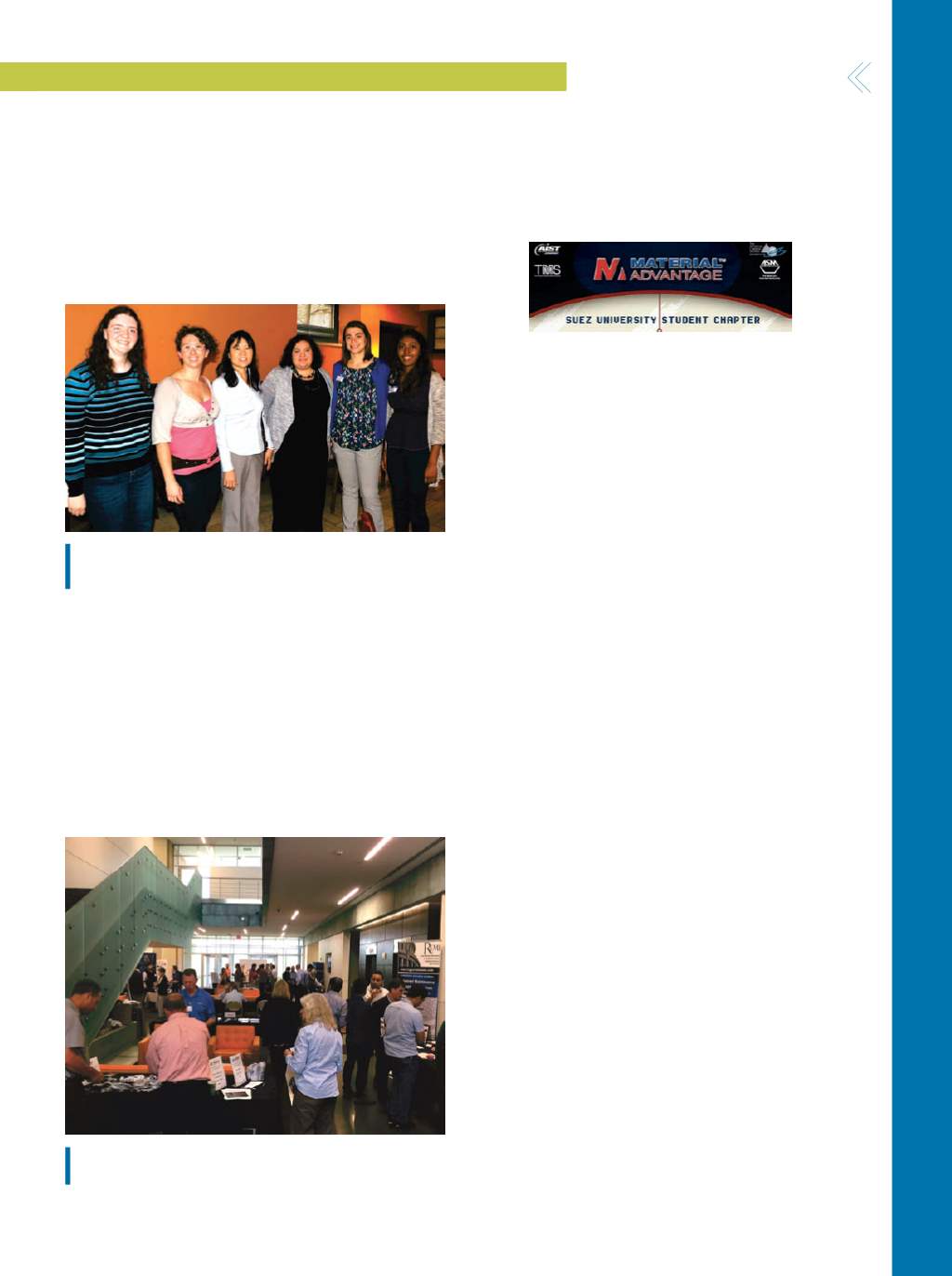

HIGHL IGHTS
TYPE
A D V A N C E D
M A T E R I A L S
&
P R O C E S S E S |
M A Y / J U N E
2 0 1 7
7 5
Chicago Presents NASA Lecture
on AM Powders
The Chicago Regional Chapter capped off another suc-
cessful technical calendar with a highly attended talk on
April 18 by Chantal Sudbrack of NASA Glenn Research Cen-
ter about a “New NASA Effort in Certifying 718 Powders for
Additive Manufacturing” at Jak’s Tavern.
Suez University Interviews Frazier
The Suez University Material Advantage Chapter,
Egypt, recently interviewed ASM President Bill Frazier for its
student newsletter. Included below is an excerpt.
From le , Kathleen Mullin, Mary Hawgood, Guiru Nash Liu,
Chantal Sudbrack, Dana Frankel, and Kirtana Sandepudi.
Oak Ridge Hosts Industry Night
In April, the Oak Ridge Chapter hosted a successful
Industry Night at the Joint Institute for Advanced Mate-
rials on the University of Tennessee, Knoxville campus.
Twenty materials science companies from the area partic-
ipated in this popular networking event and Swagelok even
had a special exhibit on wheels: The company brought its
demonstration trailer and parked it in front of the building
so attendees could watch videos and see several pieces of
equipment firsthand.
2017 East Tennessee Industry Night at the University of
Tennessee.
Suez:
Being president of ASM international must be a
struggle. Any advice for those who want to follow in your
footsteps?
Frazier:
The president is the society’s chief volunteer. It is
important to remember that ASM is a society of profession-
als who have come together to accomplish great works for
the common good that cannot be achieved independently. I
would be quick to remind him or her that our shared values
of transparency, integrity, technical excellence, diversity,
and constancy of purpose are the great enablers. Further,
it is these core values that must guide our decision-mak-
ing, allowing us to maximize our value to all of society by
working at the intersection of design/engineering, manu-
facturing, and materials. I would also emphasize that vol-
unteering to be the president or a trustee of ASM is signing
oneself up for a lot of hard work. If one is not willing to work
assiduously on behalf of the society, one should not step up.
Suez:
Please describe your contribution to corrosion-resis-
tant alloy development.
Frazier:
Working in the area of corrosion can be very hum-
bling. The physics and thermodynamics of corrosion are
clearly not on one’s side. The lower free energy state of the
corroded product works relentlessly and inexorably against
protective corrosion measures. For decades, we have
struggled to make wise material choices, protect corrosion
susceptible alloys, and inhibit the kinetic pathways of cor-
rosion. Our efforts have met with incremental improvement
but have not resulted in corrosion-free products.
I believe that in addition to pursuing improved coat-
ings, paints, and sealants, we need to look at the system as
a whole—as an electrochemical system. Three advances in
technology are required: New inherently corrosion-resistant
alloys need to be developed; modeling and simulation tools
need to be developed that can predict the electrochemical
response of the entire suite of material used in a system;
and we need new structural materials and coatings with
designed-in electrical properties, e.g., a dielectric coating
allowing current to flow in one direction but not another or
materials that allow EMI to pass while inhibiting direct cur-
rent flow.
CHAPTERS IN THE NEWS


















